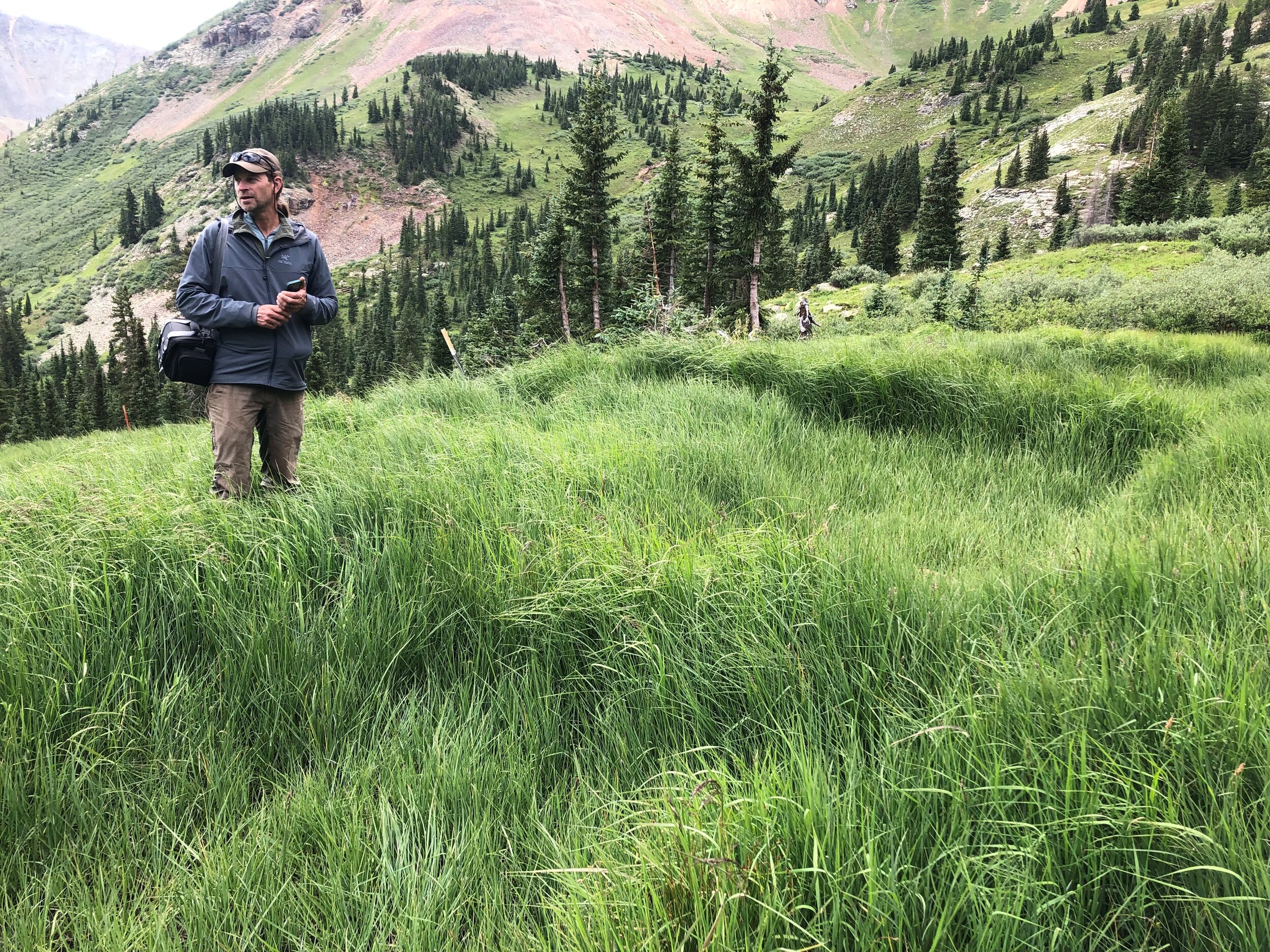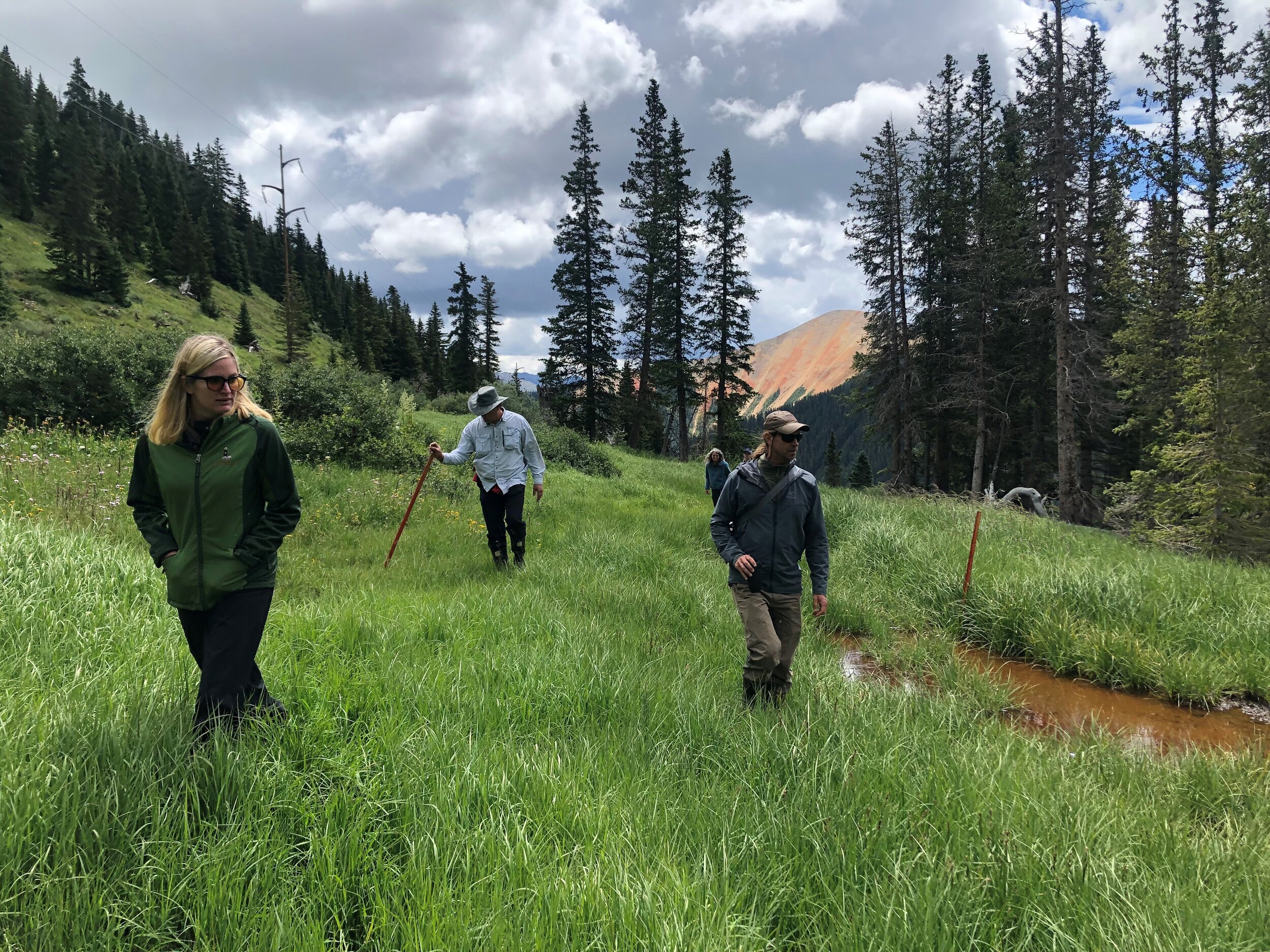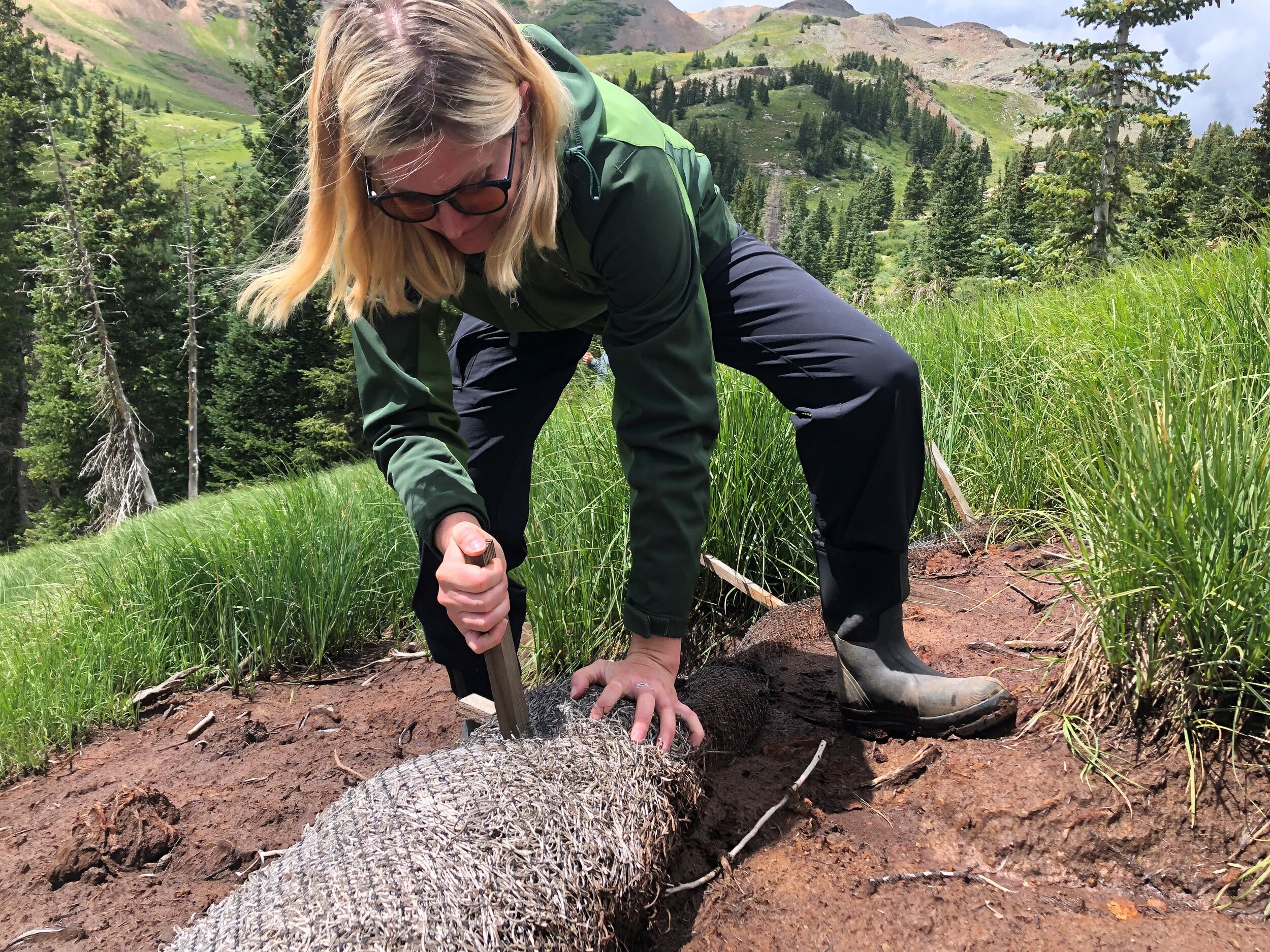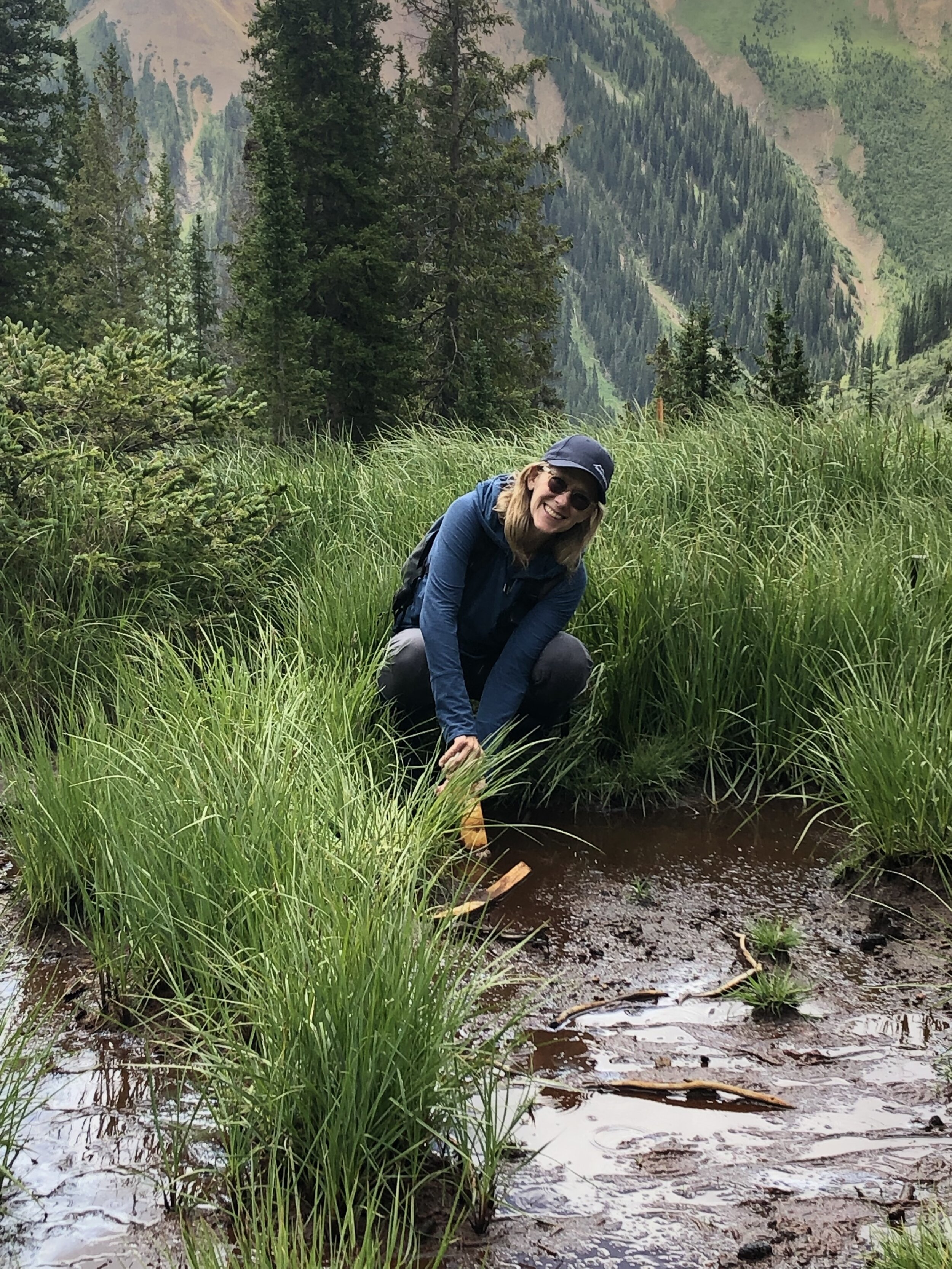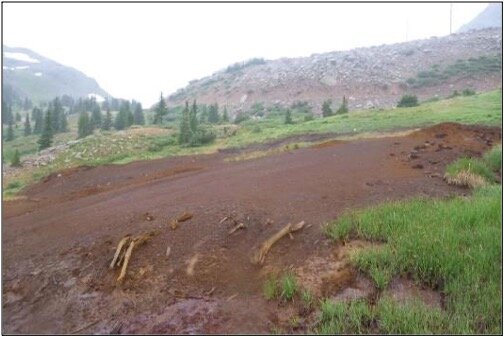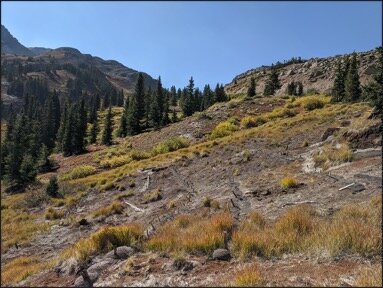MSI has dug in deep to restore high elevation wetlands
The San Juan Mountains are home to very rare “iron fens,” a type of wetland that has been granted Protected Area status. These fens are very acidic (3 - 4.5 pH, similar to a Coke) from the weathering of iron pyrite, and host unique communities of Sphagnum mosses, relics of ecosystems following the last ice age. Fens require saturated perennial soils to store carbon as peat. Human activities over the past 100 years have drained and damaged these resources.
Fens have been thought to be rare in the continental Western U.S. because of the hot and dry climate. However, it has recently become apparent that fens are numerous in the higher elevations of the Rocky Mountains and that they support endemic and wildly diverse flora and fauna. Iron fens are unique due to the mineralized groundwater that causes the acidic water and specialized plant communities that have adapted to these rare conditions. The fens in the San Juans have formed slowly over the 10,000 years.
Fens require perennially saturated soils produced by nearly constant groundwater inflow to accumulate peat. Even small water diversions or depletions can reverse the process of peat accumulation that has been ongoing in many fens for thousands of years and lead to fen destruction quickly. Fens in the San Juan Mountains have been disturbed for various reasons, including mining of minerals in the peats and draining areas for larger construction interests. These impacts have affected plant communities, soils, erosion, and water quality. Once the areas are denuded, frost heave, degraded soils, and lack of moisture affect the area’s ability to regenerate on its own. With disturbance, fens will rapidly begin to release the carbon that it has stored for centuries. Restoration has been shown to greatly increase the success of the revegetation of these areas.
MSI guides student volunteer to install the experimental grass seeding plot. (October 11, 2020)
Ophir Pass fen is at the headwaters of the Middle Fork of Mineral Creek in the Upper Animas River basin, which is a river that for many decades it’s high metal concentrations have made it toxic to aquatic life. Past mining practices at Ophir Pass fen have accelerated the processes that expose and transport metals into Mineral Creek. Ophir Pass fen is one of the steepest, rapidly eroding, and most visible fens in the San Juan Mountains. Ophir Pass fen is located near the top of Ophir Pass, which is the main high-clearance road that thousands of visitors drive from Silverton to Telluride on each year. Ophir Pass fen is one of the most severely damaged fens in the San Juan Mountains and most visible to the public.
MSI is honored and proud to announce that National Forest Foundation has awarded funding for MSI and our partner, Durango Mountain Holdings, to continue our efforts to restore this fen. We will continue working with volunteers and students to encourage the native plants to expand and fill in the bare areas remaining at the wetland, a 10-year effort to restore 5 acres of wetland. Restoration at 12,000 feet is a slow process. MSI has worked with Dr. Rod Chimner for the past 15 years on innovative techniques to increase the efficiency and efficacy of restoration.
